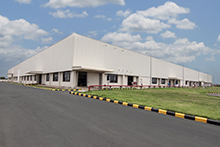RECENT ENGAGEMENT
Fixed asset investments:
How to easily manage costs and assure profitability?

Investments in fixed assets can be scary. Financial worries can burden any business owner in this process, such as:
- How can we cover costs during the build out/installation period?
- Will the investment pay off over the long term?
- What happens if we fail to meet a bank covenant?
Typically, fixed asset funding is through bank loans or investors. It’s hard enough to finance operational cash flow needs internally but external financing is a different level of concern. Such financing means financial reporting, achieving projections and loan conditions, and meeting scheduled payments.
Why the client needed help:
In this engagement, MyCFO’s client was looking to double the size of his business by doing major investments in building three new separate facilities (i.e., fitness centers). His key issues were common: achieving sales goals, meeting cash flow while each gym was being built out, making bank loan payments, and having assurance throughout the process that each gym was going to turn a profit.
In addition, his sales force for each gym was selling memberships while the facility was being built. It was crucial to sell enough advance memberships in order to know that financing and other costs would be covered. They needed easily-understood goals so that they could monitor results and adjust as needed.
The owner was an operations person and while he understood finances in general, financial management was not his area of business expertise. Providing an extensive spreadsheet with a plethora of financial ratios, as useful as they might be to financial experts, was not going to help him. Bottom-line, the client needed MyCFO to develop a simple system to know if sales goals were on or off track, and to help with financial management in meeting cash flow and bank financing requirements.
MyCFO’s work:
Our initial work was to perform a break-even analysis (this determines the number of units or amount of revenue that is needed to cover total costs; at above the break-even point, you are now making money, covering associated costs). This was a bit complicated because membership pricing increased at specific points during the build-out, and certain variable costs such as sales commissions had to be considered. Of course, construction delays would affect timing as well as increased bank loan financing costs.
All of these costs were built into a financial model that ultimately told the client the break-even point and whether current sales were sufficient to achieve a profit. In short, how many memberships were needed, at any given time, to meet profitability goals?
MyCFO’s model was updated each week with the most current financial data. By way of a simple graph, the sales team were simply shown whether sales-to-date were “above or below the line,” allowing sales management to know sales that were needed in the next week. Throughout the build-outs, MyCFO consulted regularly with the client to help as needed with financial management (e.g., cash flow and bank loans).
Results:
By using this “management control system,” our client was able to achieve outstanding results. Sales goals were met, cash flow was achieved, and the bank loans were paid on a timely basis. By the time each gym was operational, the company not only met but exceeded industry financial standards for profitability and cash flow. The business was so successful that two years later it was sold for a premium.
Can MyCFO help your company?
Is the above engagement similar to your current situation? The professionals at MyCFO would be pleased to discuss how we can help your business in evaluating fixed asset investments. Contact us today for a free initial consultation!


